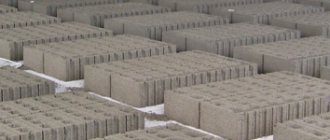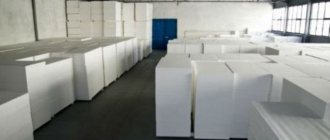Introduction
A handle is a wooden stick that is used to attach agricultural tools. It is used to make various types of shovels, brooms, rakes, pitchforks and other tools. Deciduous wood species are usually used as material for cuttings: oak, ash, beech, birch, etc., since coniferous trees contain resin and do not have sufficient strength. Previously, cuttings were made by hand, cutting them from thin branches, but today they are made on special woodworking machines.
Typically, the production of cuttings is started as a side business at sawmills
In most cases, the production of handles for shovels, rakes or forks is a related business for logging and processing enterprises. They are created using waste wood, which allows you to reduce costs and use lumber more wisely. But if you have options on where to take waste or where to sell finished products, then you can tackle this matter separately.
Attention:
There is a certain seasonality in sales of cuttings. Usually they are bought from April to September, that is, during the period of time when people work on their plots.
But seasonality can be avoided if cuttings are also made for snow shovels. By the way, in parallel with the production of cuttings, you can also launch the production of plastic shovels: such a machine costs no more than 30 thousand rubles and quickly pays for itself in just one season. But if we talk specifically about cuttings, then the main sales occur only during the season; the rest of the time there is practically no sales volume. This is due to the fact that people update tools and also break tool holders during agricultural work, so they need new ones.
Types of shovels
VIDEO ON THE TOPIC:
What types of shovels are there?
The shovel can be:
- bayonet - made of metal, flat and pointed, intended for earthworks;
- scoop - square, made of metal, for working with bulk materials (sand, crushed stone, grain);
- snow plow - square, made of plastic, aluminum or plywood;
- scoop – used when working with garbage.
Less commonly required are coal (mining) and sapper (infantry) shovels.
VIDEO ON THE TOPIC:
Choosing a shovel for snow removal
Regardless of the material, a shovel cannot be used without a handle. If you plan to produce independently, then it is best to make several types of shovel blades and cuttings for them. Demand for this tool from households increases from early April to mid-June. Construction organizations buy them all year round, but mostly in spring and summer. Shovels for snow removal are purchased in the fall and early winter.
The standard dimensions of the handle for a shovel are length 1.2-1.3 m, diameter 40 mm. Hardwood is used in production; a detailed description can be found in GOST 2695-83.
Finished products are divided into 3 grades:
- the highest - completely without knots;
- first - there may be knots, but their diameter should not be more than 3 mm (the diameter of tobacco knots is up to 3 mm);
- second - the diameter of the knots should not be more than 7 mm (the diameter of tobacco knots is up to 4 mm).
Secrets of production
As we already wrote above, holders are not made manually, since this is associated with high labor costs, and the process takes a lot of time. Therefore, you will need a specialized machine for producing cuttings. Today on the market there are several types of machines made in America, Europe, China and Russia. We recommend choosing either European or Russian machines. The fact is that American ones are quite expensive, although they are considered the most reliable. At the same time, it is almost impossible to find spare parts for them.
European machines are cheaper than American ones and are of good quality. They are designed to last, but require regular professional maintenance. Russian machines are simple and reliable, but they also need to be repaired on time. Asian devices are inexpensive, but not very high quality. You need to know which manufacturer of machine to buy and which model, so that your production does not end up being idle more than it is working.
Before you start making holders, you need to understand what exactly you will be using them for. The fact is that different tools require different cuttings. You also need to select wood for each tool, because the load on one is minimal, and the load on the second is maximum. For example, for a broom and rake, something simple like poplar or birch will do. For axes or sledgehammers, hard and durable wood is used: acacia, oak, ash. When manufacturing, it is recommended to adhere to the following standards:
- For brooms and rakes, the holders are made 25 mm thick.
- For hoes and hoes, the holders are made 30 mm thick.
- For shovels, cuttings 40 mm thick are used.
Cuttings are available in different lengths and diameters
For axes and hammers, handles are usually made by hand, but it all depends on the intended shape and model. If you wish, you can expand the range with similar handles if you still have material for blanks, but you should know that they are not bought so often. Today, almost all modern axes and hammers are produced with a fiberglass handle, which does not break or dry out like a regular one.
Who buys cuttings
Both among the population and among public utilities, the first need to purchase cuttings arises with the beginning of field work and street cleaning after winter. It is then that summer residents and farmers most often ask for these products in hardware stores. It is better to conclude contracts directly with enterprises that have departments for landscaping and public utilities. Perhaps they will form the main sales market for the enterprise. The most popular holders are for shovels. They have a diameter of 40 mm. Hoes and choppers are usually mounted on holders with a diameter of . 30 mm, and for brooms the best holder size is 25 mm. The length of the product usually does not exceed 130 mm. The lower threshold of 120 mm will prevent the product from being too short and inconvenient to use.
How cuttings are made
Before making a holder, you need to prepare the material, dry it, give it the required shape (align it so that it is straight and without bends. After this, the wood is trimmed, giving the required shape, and then processed on a specialized machine. In this case, you need to ensure that so that the workpiece is as close as possible to the shape and diameter of the finished product, otherwise processing will be difficult and time-consuming.
After the holder is made on the cutting machine, it is ground and polished to protect the customers' hands from possible splinters. If it is made for specific products and is immediately installed in the tool, then the surface is coated with varnish or paint. But in general they are sold untreated, since the paint layer may be damaged during transportation and installation. Particular attention should be paid to the selection of material for manufacturing. You should choose high-quality lumber, without chips and cracks, preferably without knots (their number should not be more than three, the knot diameter should not be more than 10 mm).
Attention:
cuttings are divided into three grades, and the grade of the product depends solely on the quality of the workpiece and the presence of knots in it. The more knots, the lower the grade of the finished product.
Once the product is turned and polished, it undergoes a quality check (usually a visual inspection), after which it is sorted, packaged and labeled. Products are usually packaged in several pieces using packing tape or wire, and covered with paper on top to protect them from damage, mechanical shock and excess moisture. Note that wood moisture content is allowed at levels up to 14%. If the material is damp, then it is guaranteed to lead or dry out.
Equipment for the production of cuttings
Making cuttings requires the presence of . Their number depends on the planned production volumes.
At the initial stage of your business, one unit of each machine will be enough for you.
Machines for the production of cuttings
- a machine for grinding one end of a workpiece and sharpening the second - from 55 thousand rubles;
- round rod machine – from 100 thousand rubles;
- cylindrical grinding machine – from 70 thousand rubles.
However, to reduce the cost of production, you can use
used machines.
Types of holders
There are a large number of varieties of holders in size, length, grade, etc. We have already described above what standard thickness is accepted for various tools, now let’s talk about length. For a regular shovel, handles are usually made up to 130 mm long, for shovels and rakes - up to 150 mm. The holder for a hoe can reach 150 mm, and for a rake generally 180. However, there are no strict standards: you can produce one option for those who need short handles, and a second for those who need long ones. The best wood options for handles are alder and birch, as well as beech, if it grows in your area. Sometimes cedar blanks are used, but usually conifers are not recommended for production due to the fact that they are heavy and impregnated with resin.
The machine processes the workpiece independently in one run
There are three types of handles:
- The highest grade, in which there are no knots at all. The holder must be well sanded; coating with varnish or paint is not necessary.
- The first grade, in which the presence of several knots is allowed, provided that their thickness is no more than 3 mm.
- The second grade, in which no more than 3 knots with a diameter of no more than 7 mm or tobacco knots with a thickness of up to 4 millimeters are allowed.
After the holder is made, one edge is given a rounded shape using a special tool. This is done for ease of use: the rounded shape does not damage the hand during operation and does not lead to injuries. The second edge of the handle is usually made conical so that it can be mounted on the tool. But this is an optional condition: often the cuttings are sold straight, they are processed for a specific tool, depending on the shape and diameter of the corresponding socket. To give the material roundness, you need a round-blade machine, which is a powerful electric motor with blades. The workpiece is simply inserted into it and the blades round it to the desired shape. Using this machine, you can not only round conventional holders, but also produce other cylindrical objects.
Profitability of production
When selling shovels, the selling price is usually 40% higher compared to the cost of the costs incurred. Different types of shovels differ in price, so it’s difficult to talk specifically about prices.
It is recommended to start with the cheapest option - the production of plywood shovels. To reduce costs, you can order ready-made cuttings from other companies or think about how to make a shovel handle with your own hands. Such a home workshop can be the start of a successful business.
According to existing statistics, monthly income in this type of business usually ranges from 50 to 150 thousand rubles.
Machine selection rules
Next, let's look at how to choose the right machine. There are several types of machines with different productivity. For beginners, machines with low power (engine power up to 1.5 kW) are suitable; for full-scale production, serious machines with power up to 10 kW are suitable. In principle, in most cases, low-power devices are sufficient, which make it possible to produce up to 200 handles per shift. Also keep in mind that when choosing a machine, you should select those models that allow you to change the diameter of the workpiece so that you can make different options.
If you want to organize the production of cuttings as a business, you can buy a ready-made line, which consists of two machines: a milling machine, which gives the workpiece a rounded shape, and a machine for rounding the ends. A high-quality kit can be purchased for 250-300 thousand rubles (2020 prices). If you purchase equipment with a total power of up to 3 kW, then you will be able to organize work even in the garage, which will allow you to save a lot on renting a room. But for powerful devices you will need a separate three-phase line, but up to 500 cuttings are made per shift.
Sales of cuttings
It is imperative to add a clause to the business plan for cuttings that would address issues of marketing the product. Already at the formation stage of your project, you need to
establish relationships with consumers regarding the delivery of finished products.
Methods for selling cuttings
You can sell cuttings:
- construction supermarkets;
- housing maintenance offices;
- municipal departments;
- farmers and dacha communities.
Also, don't neglect retail consumers. An excellent way to sell finished products is
its sale at construction markets.
To do this, you can open your own sales point
, which can subsequently bring you good profits.
How much can you earn
Let's look at the most important question: how profitable is it and how quickly will the investment pay off? For example, we will take an inexpensive 2-kilowatt kit, which you can use independently without hiring outsiders. Such a kit costs an average of 300 thousand rubles; it can produce up to 150 cuttings per work shift of 8 hours. You will also need a machine with which blanks will be made from raw materials (a regular circulation saw). It costs about another 50 thousand in good performance. In total, the total cost of equipment will be 350 thousand rubles.
Woodworking waste is used to make holders
The cost of one holder in wholesale varies from 40 to 60 rubles, depending on the class, thickness and length. When producing 150 units of finished products per day, you will earn 7.5 thousand rubles or 165 thousand rubles per month. For production, you will need at least one assistant who will cut the material. A second person will be needed to make the cuttings themselves. Let’s say that their salary, including taxes, will be 70 thousand rubles per month, and you will spend approximately another 30 thousand rubles on the purchase of material. In total, the net profit will be 65 thousand rubles per month, and the costs incurred will pay off in about 6 months.
Attention:
practice shows that in reality you will recoup the production in 7-8 months, after which it will bring a stable profit. The shift in payback period occurs due to the fact that you are unlikely to be able to immediately sell all the products you produce: in the first months you will be looking for buyers.
Manufacturing technologies. Necessary equipment
VIDEO ON THE TOPIC:
Making your own shovel from plywood
The amount of equipment for this type of business activity depends on what products will be produced and in what volume. For example, if you plan to produce only snow shovels from plywood, then production can be organized even in the garage by placing a circular saw, an electric planer (jointer) and a drill in it.
The starting materials required are plywood, steel tape, and nails.
VIDEO ON THE TOPIC:
Demonstration of the production of plastic snow shovels
To buy all this, 20-25 thousand rubles are enough.
The production of plastic shovels is more complex. In this case, a garage will not work, since an extruder is needed, the purchase of which will cost 150-180 thousand rubles. To make a web, you need to pour raw materials into an extruder. After the workpiece has cooled, an aluminum rim is put on it.
To produce metal tools, a room with a much larger area and heating is required.
Equipment for the production of metal shovels:
VIDEO ON THE TOPIC:
Automatic line operation
- manual, hydraulic or pneumatic guillotine;
- press and stamp set;
- grinding and drilling machine;
- welding machine;
- equipment for painting and drying;
- galvanic equipment (for galvanizing);
- beam crane (150 kW) or loader.
Shovel blades can be produced from rolled metal with a strength of 35-53 or from rail steel.
VIDEO ON THE TOPIC:
Production of shovels from rail steel
The manufacturing process consists of 4 stages:
- mechanical processing of the canvas;
- welding works;
- rust protection works;
- connection of the canvas with the handle.
Initial costs for equipment do not exceed 500 thousand rubles.
Mechanical work involves cutting steel into pieces of the required size. The blanks are shaped using a press with stamps.
If bayonet shovels are produced, then they need to be sharpened and an edge 0.5 mm thick must be created at an angle of 20°. To attach a cutting to the canvas, a tulika is required. For welding, you can use both spot and linear welding. Sometimes welding is replaced with rivets, but such products cannot be used for heavy work.
To protect against corrosion, a layer of zinc, paint or polymer coating is applied. Application of the polymer requires quite complex equipment, so it is easier to paint or galvanize the canvas. This means that it is not necessary to buy both a spray booth and galvanic equipment - you can choose one of these types of processing.
VIDEO ON THE TOPIC:
Making cuttings for shovels
Most often, the production of cuttings for shovels is organized as an additional one at sawmills in order to monetize waste from the main production. The choice of wood is limited - it can be birch, alder or ash. Coniferous species are not suitable for the production of cuttings - they are too heavy and contain resin.
The process consists of 3 stages: giving the workpiece a rounded shape, grinding and sharpening the end (giving a cone shape that allows you to put on a shovel blade). This means you need to purchase:
VIDEO ON THE TOPIC:
Round stick, machine for cuttings
- a round-stick machine for making cuttings, the price of which is 100-150 thousand rubles;
- grinding machine (cost - 60-80 thousand rubles);
- a machine for giving a conical shape to one end and a rounded shape to the other (cost - 50-60 thousand rubles).
Equipment for making cuttings does not cost more than 350 thousand rubles.
How to sell
Let's say right away: retail sales of handles should not interest you. You can sell them to the public if they come to your workshop, but standing in the market with your own point is pointless, since you will never sell 150 pieces per day. Therefore, you should be interested in wholesale buyers. First, try to conclude agreements with construction supermarkets and stores. Secondly, hand over finished products in bulk to resellers who work in the markets. Third, try to negotiate contracts with utility companies or local farmers who regularly purchase holders in bulk.
So that you do not have problems with sales, you need to try to create products of the highest quality and without defects. Be sure to inspect each holder: if it has defects or large knots, it is better to remove it from sale so as not to spoil the relationship with the client. With the right approach, you can make good money and capture new markets by concluding contracts with large stores.
Sales plan for finished products
All costs will pay off sooner if you start looking for wholesale buyers at the stage of developing a business plan. This is the best option since retail sales will not bring in much profit. The production of aluminum, wooden and plastic shovels may be of interest:
- agricultural enterprises,
- construction organizations,
- mining companies,
- military units,
- municipal authorities.
As an additional income, you can launch your own retail outlet selling finished products. It is not at all necessary to open a large store - a small tray located at construction and gardening markets will do. This can be a great start for those who are planning to make cuttings for shovels at home.
Take care of at least minimal advertising. A large-scale marketing campaign will obviously be superfluous here, but it is necessary to “notify” the potential audience about the product being released. A budding entrepreneur will have access to many advertising platforms - advertisements in newspapers and posted at bus stops, information on the Internet, commercials on the radio.
Sales
Not only gardeners and summer residents are potential buyers. Utility services purchase both ready-made labor tools and handles for them for their needs all year round, so problems with the sale of products usually do not arise.
Farmers who use manual labor in the fields are no exception. You can also offer your product to large construction enterprises and educational institutions. A good solution would be to conclude contracts with hardware stores or simply retail at the market.
What you need to start a business producing cuttings
In fact, you don’t need much, but you will still have to invest, because it will not be possible to make a product that fully meets all standards manually in artisanal conditions. Therefore, first we are looking for a room.
Mini workshop
To organize a small production, you do not need huge areas. It will be enough to find any suitable premises: a dry shed, a garage, etc. The area is calculated based on the dimensions of the equipment and the volume of produced and stored products.
If you are planning a larger-scale production, you will need an area of about 100 sq. m. 4 people can easily work in such a room.
The process of making cuttings is quite simple, so hiring highly qualified personnel does not make sense. It is enough to train future employees to operate the machine and set aside some time as a trial period.
Naturally, the room must be supplied with electricity, as well as good ventilation.
Equipment
Making cuttings is an almost completely mechanized process and consists of four main stages:
- Initial processing of raw materials;
- Giving the product a round shape;
- Grinding;
- Stitching one end into a cone, rounding the other.
Wooden cuttings are produced using a number of units, in particular:
- Circular saw: from 100 thousand rubles;
- Cylindrical grinding machine: from 70 thousand rubles;
- Machine for sharpening one end and rounding the other: from 55 thousand rubles.
The cost of equipment can also vary downwards, because you can look for used machines and then you can start a business producing cuttings with minimal investment.
You can also reduce costs by making machines yourself. The video clips below show the assembly processes of such units.
Sales of cuttings
It is imperative to add a clause to the business plan for cuttings that would address issues of marketing the product. Already at the formation stage of your project, you need to
establish relationships with consumers regarding the delivery of finished products.
Methods for selling cuttings
You can sell cuttings:
- construction supermarkets;
- housing maintenance offices;
- municipal departments;
- farmers and dacha communities.
Also, don't neglect retail consumers. An excellent way to sell finished products is
its sale at construction markets.
To do this, you can open your own sales point
, which can subsequently bring you good profits.
Sales options
This type of business is not based on advertising. The main thing here is to find sales channels and promptly, long before the start of spring agricultural work, provide points of sale with the required number of products. Cuttings can be sold to the following establishments:
- agricultural and construction stores, supermarkets,
- construction markets, spring fairs,
- economic divisions of administrative structures, schools, kindergartens, universities,
- Homeowners' association, housing and communal services, correctional institutions,
- farms, cooperatives, etc.
The ideal option for retail trade in cuttings is to travel to traffic flows that are actively used by summer residents.
A handle is a piece of wood for attaching a tool to it. Basically, they are made for agricultural implements, namely, for shovels, rakes, forks and brooms. Cuttings are made from beech, ash, birch or oak, that is, from deciduous trees. It is worth noting that high-quality cuttings that will meet all operational requirements can only be produced on special machines.
The production of cuttings for gardening tools is most often an additional and non-core activity in the sawmill and forestry industry as a monetization of forest waste. However, having good sources of raw materials and having access to profitable markets, such production can become the main and quite profitable one.
Such products are usually most in demand between March and June. Of course, the increase in demand is associated with the onset of the agricultural season. Direct consumers of such a product are in a hurry to update and purchase additional inventory.











